Retelling Teaching Resources
Teach students how to retell a story or passage they've read in their own words with the help of retelling worksheets and templates, digital Google Slides activities, graphic organizers and more!
This extensive collection of teaching resources has been created by teachers for teachers like you to save lesson planning time while inspiring more "aha" moments from your students! The curriculum-aligned collection is aligned with both TEKS and Common Core and includes differentiated resource options to help you meet individual learners where they are.
Created by expert teachers, each resource in this ELA collection has been carefully reviewed and curated by our team. That means it's ready to use in the classroom! You'll even find editable resources, plus differentiated options.
New to teaching this part of the ELA curriculum, or just looking for fresh ways to engage your students? Read on for a primer from our teaching team, including tips on how to teach students how to retell a story to improve their comprehension.
What Is Retelling a Story? A Kid-Friendly Definition
When you ask your elementary ELA students to retell a story, it helps to have a definition handy to explain just what you mean!
"Retell" or retelling a story means summarizing the key events and details in your own words.
The goal, of course, is for our students not just to consume information from a fiction or nonfiction text but to synthesize it and be able to share it with others!
How to Teach Story Retelling — A Step-by-Step Guide for Teachers
So we know it's a must-learn skill for kids. Now how do you teach it?
We can't exactly write your lesson plans for you (if only), but here are some tips from our teacher team to explicitly model how to retell a story.
- Find a story your students have read or heard before.
- Introduce the story to your class and review the key elements. Who are the main characters? What is the setting? What are the events that occur? Are there problems that the protagonist encounters? How are the problems solved?
- Explain to your class that when retelling a story, it is important to include these key elements to summarize the story accurately.
- Use a story map to model how to retell the story by filling in the different elements of the story. As you fill in each element, explain why including it in the retelling is important.
- After completing your story map, use it to retell the story aloud to the students, leaving the map in full view for students to refer to.
- As you retell the story, pause to ask questions and gauge students' understanding. Who was the main character in the story? What was the problem that the character faced?
- Encourage your students to ask questions as you retell the story, and use their input to further clarify or expand on the retelling.
- Now it's their turn! Have your students practice retelling the story themselves, using the story map as a guide.
Tips for Using the 5-Finger Retell Story Strategy
The 5-Finger Retell is a common technique in elementary schools for teaching story-retelling skills — common but effective!
The 5-Finger Retell uses the hand as a mnemonic device, with each finger on one hand representing a different literary element that the student should include in their retelling.
The five elements along the five fingers typically include:
- Characters — Who is in the story?
- Setting — Where and When did the story take place?
- Problem — What was the main conflict or issue in the story?
- Events — What are the key events or actions that occur in the story?
- Solution — How was the problem resolved?
By using the five fingers on their hand as a guide, kids can more easily recall the key elements they need to include when retelling a story so they can present a cohesive summary packed with all the right literary elements.
Why Is Retelling a Story Beneficial for Children's Comprehension?
Teaching kids how to retell a story is a way of arming our students with the ability to comprehend and recall important details and organize their thoughts effectively, then share that information — all foundational skills in reading comprehension!
Retelling can help students develop their vocabulary and oral language skills as young as kindergarten while demonstrating their understanding of a story.
Students often begin by sharing their version of the story's main idea and key details by speaking it aloud in class, later moving on to writing.
- Plus Plan
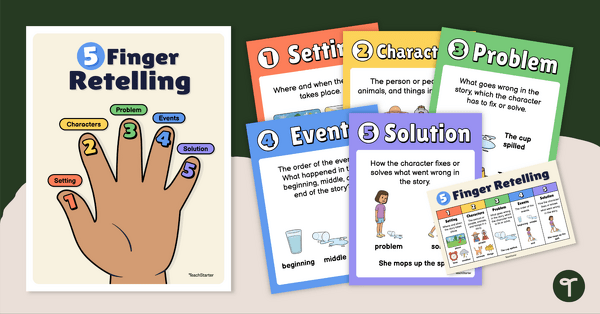
5 Finger Retell Classroom Posters
Guide students through the 5 finger retell process with this set of classroom posters and individual student guide.
- Plus Plan
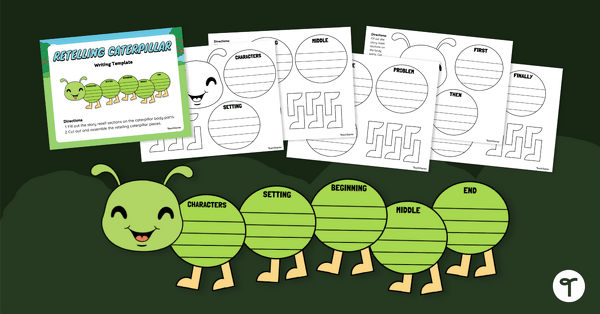
Retelling Caterpillar Writing Template
Help students break down their retells with this cute caterpillar writing template.
- Plus Plan
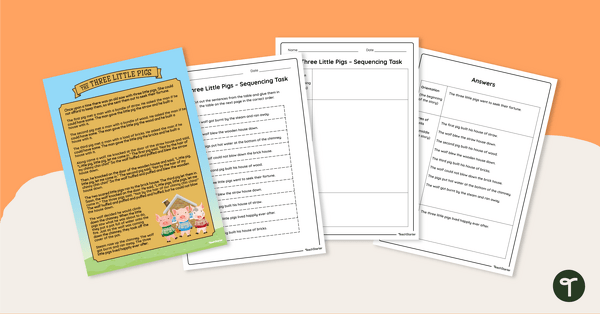
Three Little Pigs – Sequencing Worksheet
Identify the story beginning, series of events and ending with this narrative text sequencing activity.
- Plus Plan
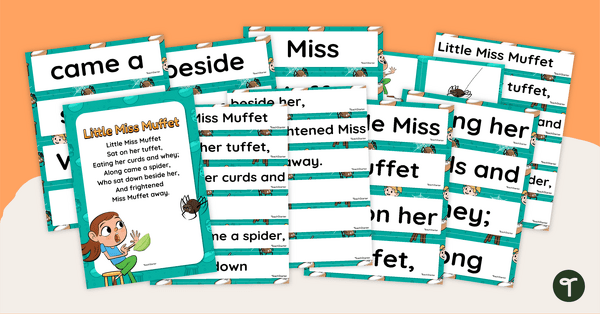
Little Miss Muffet - Sequencing Cards
Read and retell the story within the tale of Little Miss Muffet with a set of retelling pocket chart cards.
- Plus Plan
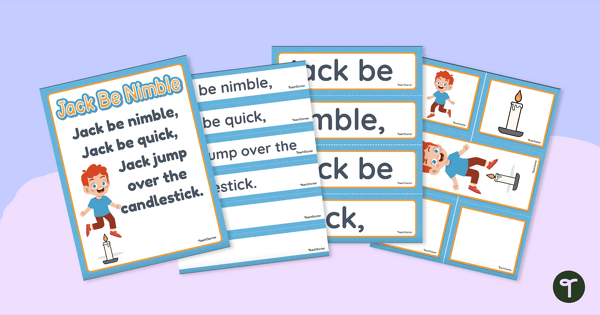
Jack Be Nimble - Pocket Chart Sequencing Cards
Read and retell the story of Jack Be Nimble with a set of retell pocket chart cards.
- Plus Plan
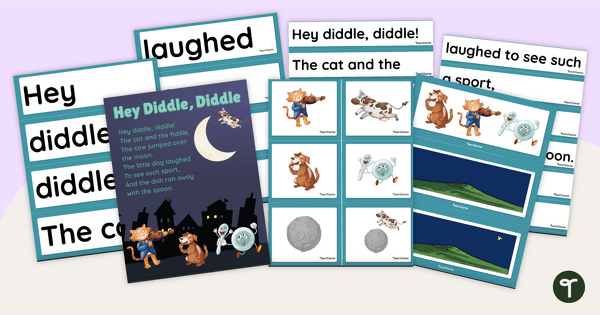
Hey Diddle Diddle - Sequencing Cards
Sequence the events in “Hey Diddle Diddle” with a set of retelling pocket chart cards.
- Plus Plan

Humpty Dumpty Pocket Chart Retell Cards
Read and retell the story within the Humpty Dumpty tale with a set of retelling pocket chart cards.
- Plus Plan
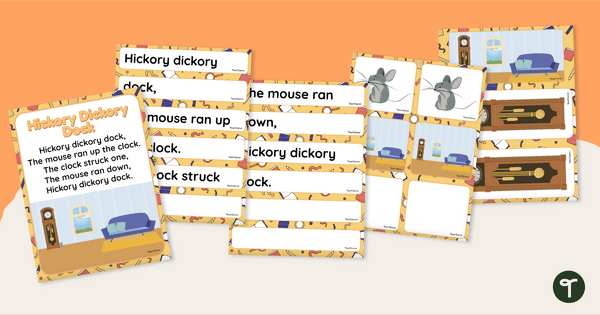
Hickory Dickory Dock - Pocket Chart Retell Cards
Read and retell the story found within the nursery rhyme Hickory Dickory Dock with a set of retell pocket chart cards.
- Plus Plan
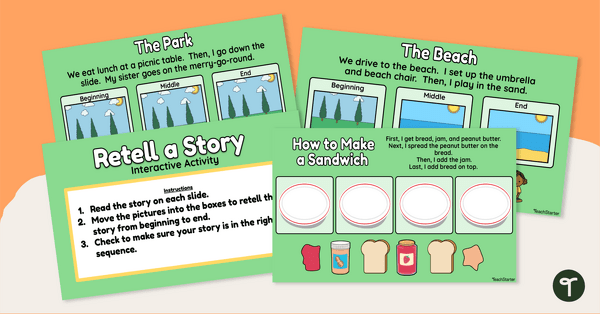
Google Slides Interactive - Story Retell Activity
Use this Google Slides Interactive activity to practice retelling stories.
- Plus Plan
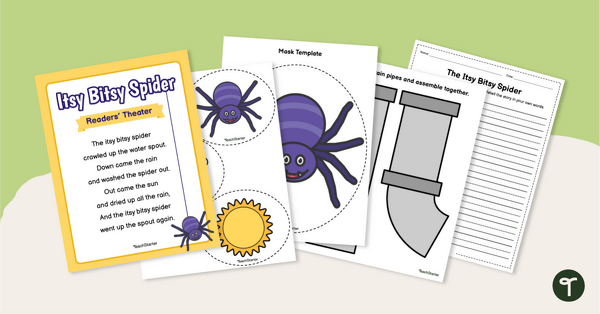
Readers' Theater - Itsy Bitsy Spider Read and Retell Activity
Engage young readers in texts with a dramatic reading of “The Itsy Bitsy Spider” and accompanying story retelling activity.
- Plus Plan
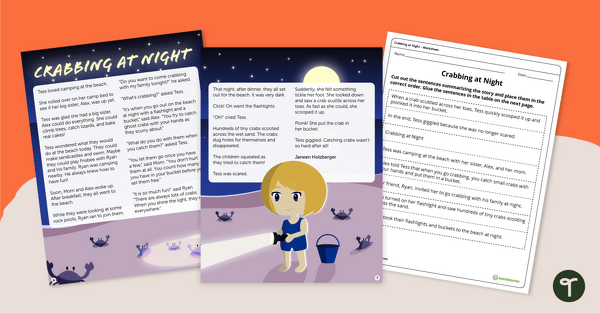
Crabbing at Night – Sequencing Worksheet
Identify the story beginning, series of events and ending with this narrative text sequencing activity.
- Plus Plan
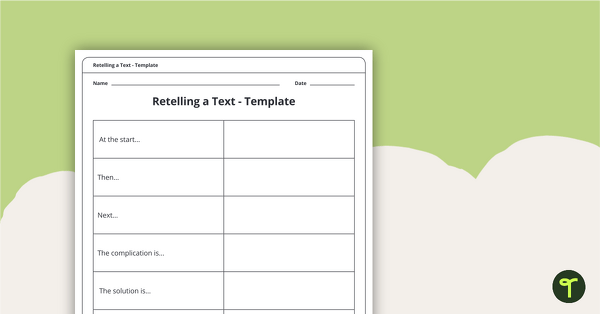
Guided Reading Groups - Retelling a Text Template
Use this template during a guided reading session for a scaffold to help your students retell a text.
- Plus Plan
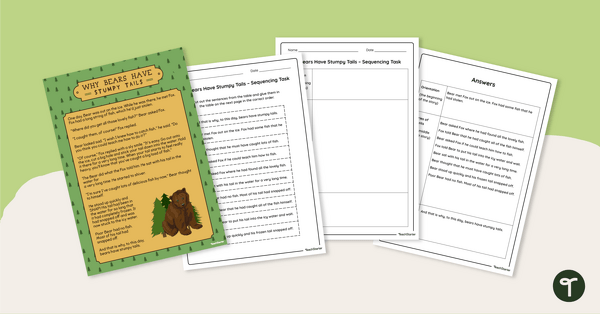
Sequencing Worksheets Bundle (Why Bears Have Stumpy Tails)
Print a sequencing worksheet for 1st or 2nd grade with an engaging bear story! Give students practice identifying the story beginning, series of events and ending.